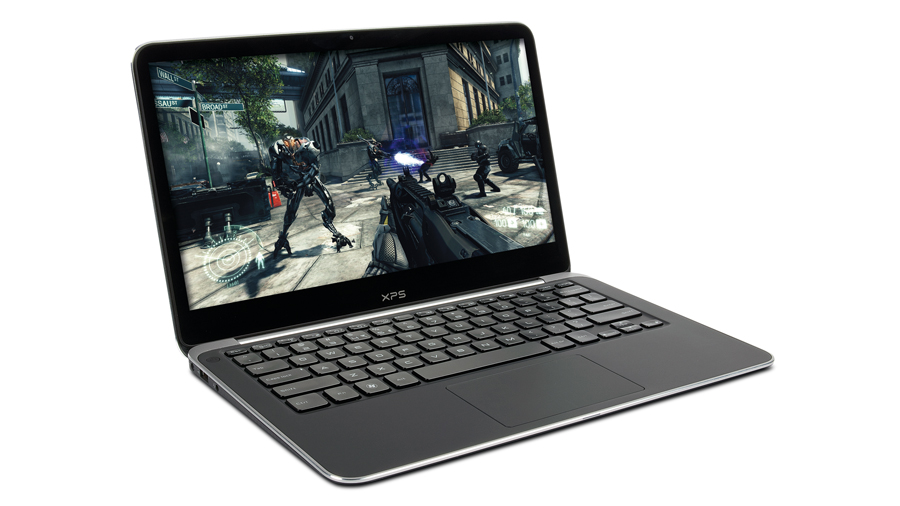How it's possible to play high-end games on ultraportable laptops
Dynamix makes the most from integrated graphics

Gaming on a laptop has traditionally meant using massive desktop-replacement beasts tied to the power socket, with no hope of fun on the road.
On the flip side, trying to play modern titles on a machine with integrated graphics has generally meant staccato frame rates in the single digits.
But what if we told you that it needn't be that way? What if we told you that on an Ultrabook with only HD 4000 graphics we could have Crysis 2 running smoothly, and without too much sacrifice either?
Lucid Logix is a name that will be familiar to most readers as the company that allowed folk with Z68 or Z77 motherboards to use discrete graphics cards and still have access to the funky Quick Sync bits of the Ivy Bridge and Sandy Bridge chips.
Functional, but not too sexy, right? Its new Dynamix software, though, can double gaming frame rates on integrated graphics, giving laptops without discrete GPUs serious gaming chops. Lucid Logix is a tiny company with big ambitions, and now it's got the software to match that ambition.
We went to see Lucid while we were over in San Francisco for IDF. Usually when we say that we mean we saw a representative, but not this time - we actually saw pretty much the entire company. A good chunk of its small team was in the room with us as Offir Remez, president and MD of Lucid, took us through the demos of the latest goodies.
We saw its Virtu MVP Mobile software running on a laptop and a concept external GPU set up via a hot-swappable Thunderbolt connection - but it was the new software running on an Ivy Bridge Ultrabook that really impressed.
Get daily insight, inspiration and deals in your inbox
Sign up for breaking news, reviews, opinion, top tech deals, and more.
Crysis management

The little laptop, with its relatively feeble HD 4000 graphics, had Crysis 2 sitting on it. While it's not quite the crazy-demanding game its predecessor was, it's still a graphics hog, so on the surface it might seem unfair to put the poor machine through the wringer with it.
And with the machine barely managing to hit 9fps it seemed like a pretty pointless exercise - nobody is going to play at those frame rates. That's where Lucid's Dynamix software comes into play, though.
A quick press of a pre-ordained key to enable it while still in the game, and suddenly the FRAPS frame rate counter jumped up to over 20. Suddenly it was playable and much, much smoother. A credible gaming experience on an Ultrabook - what voodoo is this?
It's a software-based solution, requiring no extra hardware and - in a first for Lucid - operating on a single graphics processor.
"We take everything we know how to do," says Offir. "We know every frame going into the pipeline. We capture it before, we analyse the tasks, we know what it's going to do. We sometimes distribute it between the CPU and GPU, and sometimes different GPUs.
"We said, 'Can we use that in a one GPU environment and walk the fine line between quality and performance?'" he continues. "Would you give up a small percentage of quality - we are playing with pixels here - to double performance? Let's say 2 per cent quality to double performance."
Dynamic Resolution Rendering

What Lucid is doing here is based on something Intel itself passed around at this year's Games Developer Conference (GDC) back in March - something called Dynamic Resolution Rendering. It was a concept which allowed better frame rates on lower powered hardware, while still retaining much of the visual clarity you want with high-resolution gaming.
But nobody wanted to know. The extra code needed to add this into the developers' game engines obviously wasn't seen as worth it for individual titles on a platform as seemingly niche as the PC.